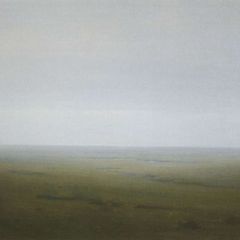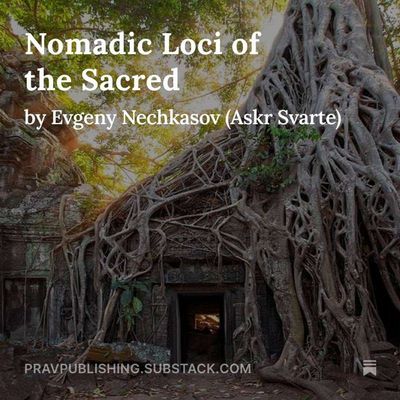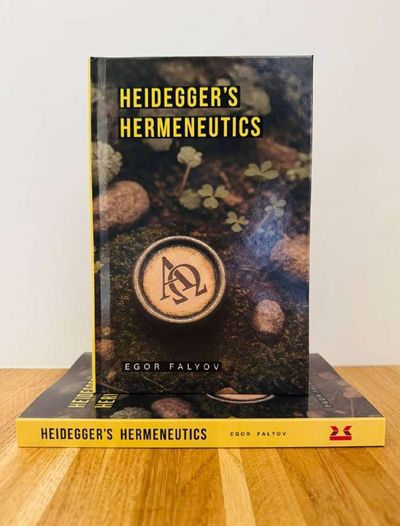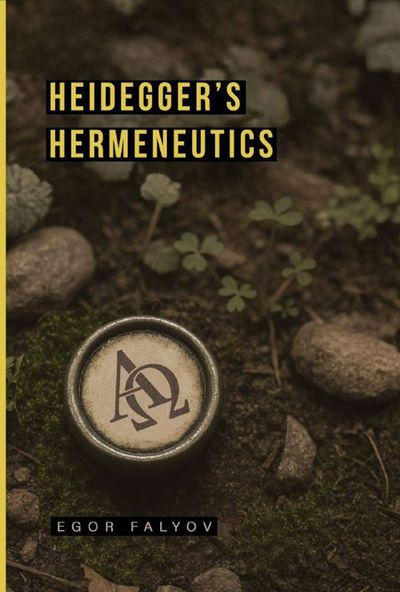
Мир сегодня с "Юрий Подоляка"

Инсайдер UA

Реальна Війна | Україна | Новини

Continental-Conscious
Behold the Continents — Visible and Invisible — Moving Again.
TGlist рейтинг
0
0
ТипАчык
Текшерүү
ТекшерилбегенИшенимдүүлүк
ИшенимсизОрду
ТилиБашка
Канал түзүлгөн датаБер 08, 2023
TGlistке кошулган дата
Трав 23, 2024"Continental-Conscious" тобундагы акыркы жазуулар


15.05.202508:33
12.05.202513:45
“A transmission of truth is poured from one vessel into another. If you as a vessel are impure in body, heart or mind, the truth cannot be contained… what is pure becomes impure… the power of the truth is too much… the cup is smashed… the transmission lost, and man continues to walk in darkness. In your lifetime you have read thousands of words… words that bespeak the secrets of the Universe. But how few you have received, how many transmissions you have lost again and again because you were not ready to hear…”
Кайра бөлүшүлгөн: PRAV Publishing
PRAV Publishing
12.05.202507:47
NEW on the PRAV Perspectives Substack:
“Nomadic Loci of the Sacred” by Evgeny Nechkasov (Askr Svarte)
pravpublishing.substack.com/p/nomadic-loci-of-the-sacred
“Nomadic Loci of the Sacred” by Evgeny Nechkasov (Askr Svarte)
pravpublishing.substack.com/p/nomadic-loci-of-the-sacred


10.05.202522:34
Average non-PRAV literature
Кайра бөлүшүлгөн: PRAV Publishing
PRAV Publishing
10.05.202517:54
NEW on the PRAV Perspectives Substack:
“Pincher”, a tale of facing death, by Charles Ybdis, Annex Iptaru I
https://pravpublishing.substack.com/p/pincher
“Pincher”, a tale of facing death, by Charles Ybdis, Annex Iptaru I
https://pravpublishing.substack.com/p/pincher


Кайра бөлүшүлгөн: PRAV Publishing
PRAV Publishing
09.05.202508:16
THE WAIT IS OVER!
NOW AVAILABLE from PRAV Publishing:
Heidegger’s Hermeneutics
by Egor Falyov
translated by Jafe Arnold
323 pages, available in hardcover and paperback editions (ebook coming soon).
Support independent publishing by ordering direct from PRAV
Subscribe to the PRAV Perspectives Substack to receive a 15% discount code and access to selected excerpts: https://pravpublishing.substack.com/
NOW AVAILABLE from PRAV Publishing:
Heidegger’s Hermeneutics
by Egor Falyov
translated by Jafe Arnold
323 pages, available in hardcover and paperback editions (ebook coming soon).
Support independent publishing by ordering direct from PRAV
Subscribe to the PRAV Perspectives Substack to receive a 15% discount code and access to selected excerpts: https://pravpublishing.substack.com/




05.05.202522:52
Кайра бөлүшүлгөн: James Porrazzo | Total War News
James Porrazzo | Total War News
05.05.202522:49
Daria Dugina: A Theory of Europe as Dramatic Confrontation
“Like Daria’s life and death, this work is no stale “case study”, but an animated reminder of the sways, trials, tribulations, and visions of being that a radical human faces in our times and places. Daria treats the Nouvelle Droite not as a set of dogmatic concepts, but as a living theorising, a theoretical journey which, like any travel, involves dramatic confrontations and recognitions. We must approach her and her book — and ourselves — accordingly.”
- Jafe Arnold, PRAV Publishing, excerpt from the Introduction to Daria Platonova Dugina, A Theory of Europe.
Available now from Arktos:
https://amazon.com/dp/1915755948
“Like Daria’s life and death, this work is no stale “case study”, but an animated reminder of the sways, trials, tribulations, and visions of being that a radical human faces in our times and places. Daria treats the Nouvelle Droite not as a set of dogmatic concepts, but as a living theorising, a theoretical journey which, like any travel, involves dramatic confrontations and recognitions. We must approach her and her book — and ourselves — accordingly.”
- Jafe Arnold, PRAV Publishing, excerpt from the Introduction to Daria Platonova Dugina, A Theory of Europe.
Available now from Arktos:
https://amazon.com/dp/1915755948


05.05.202500:54
Because of the controversy he generated, relentlessly exhibited or exposed, and mercilessly toyed around with, it is a fact that taking up the memorializing of James Porrazzo is a risky, dangerous thing. James himself often said, as I have quoted here and elsewhere before, that there is no need to compromise oneself by citing the ones with whom one hammers at the anvil of ideas, aesthetics, life, death, relationships, etc., etc. In fact, when he managed to send me a copy of Bronze Age Mindset to my hostel in Laos, he highlighted the sentence about “no need to cite this”.
But, sometimes, a name, an attribution, and a reputation ought to be uttered because they show the Divine that we can and do rejoice in being shown something about the Divine, about ourselves, about the illusion and truth of it all. So that we might be True.
"All the world’s a stage”. Our stage. The Divine plot has room for all possible characters, climaxes, downfalls, victories, defeats, etc. But the show must go on.
That is why, no matter what your project is, where you’re from and where you’re going, we take a minute to think about the James Porrazzo Show(ing). And we take a minute to think about the pathetic helplessness of those who rush to shovel their unresolved issues onto his grave. And we think about the facticity of a real dissident surrounded by questions, problems, praises, love, hate, truth, gossip, etc., etc. And then, in the best case scenario, we find ourselves looking up, down, around, behind, and forward, deciding to take a step further, wherever it leads.
In the beginning, in the meanwhile, and in the end, as James Porrazzo once showed:
“Kali Yuga continues ahead full speed. The European man and woman is under attack on all levels no matter where they stand on the globe. Things are going to become much, much worse before they become better – if they become better. But as revolutionaries – we need to embrace chaos and danger as our best friends because they represent real opportunity. After this all burns to the ground, and it will, we need to be the ones – and if not us our children or grandchildren – who put things back together. A Better World is Possible, but we are going to have to fight for it. And it is going to be the bloodiest fight this world has ever seen.”
“Be True to Yourself.”
But, sometimes, a name, an attribution, and a reputation ought to be uttered because they show the Divine that we can and do rejoice in being shown something about the Divine, about ourselves, about the illusion and truth of it all. So that we might be True.
"All the world’s a stage”. Our stage. The Divine plot has room for all possible characters, climaxes, downfalls, victories, defeats, etc. But the show must go on.
That is why, no matter what your project is, where you’re from and where you’re going, we take a minute to think about the James Porrazzo Show(ing). And we take a minute to think about the pathetic helplessness of those who rush to shovel their unresolved issues onto his grave. And we think about the facticity of a real dissident surrounded by questions, problems, praises, love, hate, truth, gossip, etc., etc. And then, in the best case scenario, we find ourselves looking up, down, around, behind, and forward, deciding to take a step further, wherever it leads.
In the beginning, in the meanwhile, and in the end, as James Porrazzo once showed:
“Kali Yuga continues ahead full speed. The European man and woman is under attack on all levels no matter where they stand on the globe. Things are going to become much, much worse before they become better – if they become better. But as revolutionaries – we need to embrace chaos and danger as our best friends because they represent real opportunity. After this all burns to the ground, and it will, we need to be the ones – and if not us our children or grandchildren – who put things back together. A Better World is Possible, but we are going to have to fight for it. And it is going to be the bloodiest fight this world has ever seen.”
“Be True to Yourself.”
05.05.202500:54
In the standing out and bringing into relief of the play of dark and light, in the green light he originally elected for his original movement, all of James Porrazzo’s undertakings were about “showing”. Heidegger (whom James couldn’t stand to read, no matter how many times I tried to convince him) once said that the essential, truest meaning of his philosophizing was “to show the movement of showing”; likewise, it could be said that the true meaning of all of James Porrazzo’s projects was “to project the movement of projecting”. James Porrazzo worked on projecting spectacles which not even the “society of the spectacle” (à la Guy Debord) could handle. He never devised a “theory”; rather, he upheld the original meaning of the ancient Greek word theoria, that is, a journey of seeing and showing, a traveling to petition an oracle and to bring back the mysterious utterances to others, an adventure to be shown something and to show it to others. He devised only the messaging of the message. The message he showed to his friends, students, and even enemies might be translated as follows: “You have no idea what we are capable of. Watch this.” And then as well as now, as is so often the case, everyone looks at the finger instead of what it was pointing at.
In one of the papers he circulated among his most trusted, he inscribed: “Haec ego non multis, sed tibi scribo: satis enim magnum alter alteri theatrum sum us.” In other words, even in his most exoteric and “watered down” projects, he was always “only” showing something to those few for whom something matters instead of nothing. Verily, there is so much to be seen in the world, but how many of our contemporaries know what it means “TO BE SHOWN”…
When the circumstances he faced in life were worse, James lept even further into showing. When his health was worse, he lept even further into showing. When his relationships were worse, he lept even further into showing. James Porrazzo was, both above and beyond himself and in his deepest self, a shower, and he alone paid all the consequences… and left others shown that they will have even more to pay. His ashes haven’t even been settled for a week, and yet his ghost is already driving some into mad fits of trying to “show” something, but all they have are empty words.… “Showing” — there’s an existential, phenomenological, mythopoetic, revolutionary, originary, incredibly daring venture and sacrifice which few are willing and able to take up in themselves, in their projects.
When James Porrazzo’s health took a turn for the worst, his closest friends from around the world lept to take care of him and keep him company as best as they could. But James was completely uninterested in being taken care of. In his final weeks, he “settled into meditative equipoise,” to use the words of Tibetan Buddhist tradition, which he studied intently, among so many other things... His last messages and words were about his friends and students: What do they have to show? What can they show me? What can I show them? What is there to be shown? His last words to me boiled down to: “Please show me something.”
Over the past four years, I took dissidents from around the world to meet James Porrazzo in Serbia. Every meeting, every conversation, every exchange of agreements and disagreements was a spectacle. All of them “saw something,” or “saw someone” — what a relief, what a shock compared to the Postmodern non-world of non-sights around us, where there are so many anti-sightseeings around us that one might as well be blind if they’re looking for visions!
In one of the papers he circulated among his most trusted, he inscribed: “Haec ego non multis, sed tibi scribo: satis enim magnum alter alteri theatrum sum us.” In other words, even in his most exoteric and “watered down” projects, he was always “only” showing something to those few for whom something matters instead of nothing. Verily, there is so much to be seen in the world, but how many of our contemporaries know what it means “TO BE SHOWN”…
When the circumstances he faced in life were worse, James lept even further into showing. When his health was worse, he lept even further into showing. When his relationships were worse, he lept even further into showing. James Porrazzo was, both above and beyond himself and in his deepest self, a shower, and he alone paid all the consequences… and left others shown that they will have even more to pay. His ashes haven’t even been settled for a week, and yet his ghost is already driving some into mad fits of trying to “show” something, but all they have are empty words.… “Showing” — there’s an existential, phenomenological, mythopoetic, revolutionary, originary, incredibly daring venture and sacrifice which few are willing and able to take up in themselves, in their projects.
When James Porrazzo’s health took a turn for the worst, his closest friends from around the world lept to take care of him and keep him company as best as they could. But James was completely uninterested in being taken care of. In his final weeks, he “settled into meditative equipoise,” to use the words of Tibetan Buddhist tradition, which he studied intently, among so many other things... His last messages and words were about his friends and students: What do they have to show? What can they show me? What can I show them? What is there to be shown? His last words to me boiled down to: “Please show me something.”
Over the past four years, I took dissidents from around the world to meet James Porrazzo in Serbia. Every meeting, every conversation, every exchange of agreements and disagreements was a spectacle. All of them “saw something,” or “saw someone” — what a relief, what a shock compared to the Postmodern non-world of non-sights around us, where there are so many anti-sightseeings around us that one might as well be blind if they’re looking for visions!
05.05.202500:54
He was loud in some respects and silent in others. Open in some domains and concealed in others. Uncompromising and unmoved on some points while amenable and even unpredictably shifting on others. Semi-legendary and yet semi-anonymous, somewhere in-between, depending on the place, time, light, and people at hand. Loved and hated, never in-between. Relentlessly labeled by many, rejected out of fear of unlabelability by others, all the while as he himself forged and shaped the labels others (ex-)appropriated. Utterly unmarketable, he made a living out of marketing, which he hated and yet was too adept to abandon to the fakers, recyclers, and, as he liked to say, “used car salesmen” of the world. In all of the paradoxes, seeming contradictions, and contrasts, one thing remained true: James Porrazzo never, not for a split second, ever fell into inauthencity, banality, or unoriginality.
If you subject James Porrazzo to a Google search, a slight glimpse into his underlying apperception will shine through: among various articles calling him a “neo-Nazi”, a “Communist”, a “North Korean death cultist”, a “Satanist”, a “Duginist”, an “informant”, etc., etc., there is his old Goodreads account with a single book listed: A Systematic Course in the Ancient Tantric Techniques of Yoga and Kriya. Few came to know (rightfully so) the esoteric, Tantric, Yogic James Porrazzo, even though he left traces, tracks, trials and tribulations pointing towards such everywhere. For example, if you look at the earliest days of New Resistance, particularly the early editions of The Green Star and Open Revolt!, you’ll read: “Why the Green Star? Green is the color of Revolution, of Freedom and of Justice…. Five for the five fingers of the revolutionary’s hand. Five for the five continents we hope to see liberated in Revolutionary struggle. Five for the elements of society we draw our cadres from: the worker, the student, the intellectual, the soldier and the outlaw. For the esoteric minded five also represents man himself (or woman herself).” As for interpreting the green, which James otherwise presented as owed to Gaddafi as an inspiration, we read in Daria Platonova Dugina’s Eschatological Optimism (which James played an irreplaceable role in helping bring to the world):
“It is also important to note that in Sufism the passage from the night of the unconscious to the day of consciousness and then even higher to the night of super-consciousness is accompanied by vivid, colorful, visual images. Throughout Sufism runs the thread of a green light which symbolizes the highest, apophatic, ineffable principle beyond being. The transcendent, supreme night, the “darkness above light” of which the Areopagitic texts speak, manifests itself through a visible green light. Why is it green? I discussed the matter with my father — what kind of light is this, what kind of shade? I thank him for the hint: this green light is, in fact, barely distinguishable from darkness, barely tangible, it is a dark shade that only barely stands out against a dark background, it is light and not light. One could say that it is a result of compromise between night and light, thanks to which darkness becomes fixed and distinguishable.”
If you subject James Porrazzo to a Google search, a slight glimpse into his underlying apperception will shine through: among various articles calling him a “neo-Nazi”, a “Communist”, a “North Korean death cultist”, a “Satanist”, a “Duginist”, an “informant”, etc., etc., there is his old Goodreads account with a single book listed: A Systematic Course in the Ancient Tantric Techniques of Yoga and Kriya. Few came to know (rightfully so) the esoteric, Tantric, Yogic James Porrazzo, even though he left traces, tracks, trials and tribulations pointing towards such everywhere. For example, if you look at the earliest days of New Resistance, particularly the early editions of The Green Star and Open Revolt!, you’ll read: “Why the Green Star? Green is the color of Revolution, of Freedom and of Justice…. Five for the five fingers of the revolutionary’s hand. Five for the five continents we hope to see liberated in Revolutionary struggle. Five for the elements of society we draw our cadres from: the worker, the student, the intellectual, the soldier and the outlaw. For the esoteric minded five also represents man himself (or woman herself).” As for interpreting the green, which James otherwise presented as owed to Gaddafi as an inspiration, we read in Daria Platonova Dugina’s Eschatological Optimism (which James played an irreplaceable role in helping bring to the world):
“It is also important to note that in Sufism the passage from the night of the unconscious to the day of consciousness and then even higher to the night of super-consciousness is accompanied by vivid, colorful, visual images. Throughout Sufism runs the thread of a green light which symbolizes the highest, apophatic, ineffable principle beyond being. The transcendent, supreme night, the “darkness above light” of which the Areopagitic texts speak, manifests itself through a visible green light. Why is it green? I discussed the matter with my father — what kind of light is this, what kind of shade? I thank him for the hint: this green light is, in fact, barely distinguishable from darkness, barely tangible, it is a dark shade that only barely stands out against a dark background, it is light and not light. One could say that it is a result of compromise between night and light, thanks to which darkness becomes fixed and distinguishable.”
Кайра бөлүшүлгөн: PRAV Publishing
PRAV Publishing
04.05.202522:02
NEW on the PRAV Perspectives Substack:
"Interpreting Hölderlin's Poetry with Heidegger"
by Egor Falyov,
translated by Jafe Arnold
https://pravpublishing.substack.com/p/interpreting-holderlins-poetry-with
"Interpreting Hölderlin's Poetry with Heidegger"
by Egor Falyov,
translated by Jafe Arnold
https://pravpublishing.substack.com/p/interpreting-holderlins-poetry-with


Кайра бөлүшүлгөн: PRAV Publishing
PRAV Publishing
02.05.202512:51
NEW on the PRAV Perspectives Substack:
“Black Mirror”, a chilling short story by Yuri Mamleev,
translated by Charlie Smith
https://pravpublishing.substack.com/p/black-mirror
“Black Mirror”, a chilling short story by Yuri Mamleev,
translated by Charlie Smith
https://pravpublishing.substack.com/p/black-mirror


Кайра бөлүшүлгөн: PRAV Publishing
PRAV Publishing
01.05.202510:14
PRAV PUBLISHING IS NOW ON SUBSTACK
https://pravpublishing.substack.com/
Dear readers and friends,
At long last, the PRAV Publishing team is excited to be re-launching our PRAV Perspectives digest-newsletter, and in a new, expanded format: on the PRAV Perspectives Substack, we look forward to sharing news and plans as well as book excerpts and original writings.
For readers and friends who are willing and able to help support our daring adventure in the world of independent publishing by opting for the paid subscription to the PRAV Perspectives Substack, we’ll be offering subscriber-only updates, writings and translations, exclusive discounts and pre-orders, and other unique content and tokens of gratitude on a regular basis.
For sticking with us as we grow, please enjoy 15% off all orders with the coupon code PERSPECTIVES at pravpublishing.com/our-titles-shop/
Without further ado, the first two items up on Substack are:
1. “At the Doorstep: Reaction? Revolution?”
by Nikolai Trubetzkoy
&
2. “The Mesopotamian Connection: The Common Roots of Sinitic and Indo-European Thought”
by Xantio Ansprandi (available as a PDF download for paid subscribers)
Happy reading!
https://pravpublishing.substack.com/
Dear readers and friends,
At long last, the PRAV Publishing team is excited to be re-launching our PRAV Perspectives digest-newsletter, and in a new, expanded format: on the PRAV Perspectives Substack, we look forward to sharing news and plans as well as book excerpts and original writings.
For readers and friends who are willing and able to help support our daring adventure in the world of independent publishing by opting for the paid subscription to the PRAV Perspectives Substack, we’ll be offering subscriber-only updates, writings and translations, exclusive discounts and pre-orders, and other unique content and tokens of gratitude on a regular basis.
For sticking with us as we grow, please enjoy 15% off all orders with the coupon code PERSPECTIVES at pravpublishing.com/our-titles-shop/
Without further ado, the first two items up on Substack are:
1. “At the Doorstep: Reaction? Revolution?”
by Nikolai Trubetzkoy
&
2. “The Mesopotamian Connection: The Common Roots of Sinitic and Indo-European Thought”
by Xantio Ansprandi (available as a PDF download for paid subscribers)
Happy reading!
01.05.202501:17
As the above quotes testify, tonight I’ve been going through James Porrazzo’s “estate” left behind. And now I’ve come across two unexpected discoveries:
1. A poetic inscription, evidently held dear:
Hear our word
Gods call you to war
Unnatural enemy emerged
Attacking all that is natural on Earth
It must be met with the sword
The Gods call you to war
Satan calls you to war
Jehovah calls you to war
Lucifer calls you to war
Christ calls you to war
The Gods have put aside their differences for you to be man
The call is clear
The trumpets have sounded
Left and Right hands are united
All that is done in this fight will be forgiven
Redemption and eternal life for all who fight
The portals will be closed
The last war on earth has begun
So Be It
2. Once upon a time, James recorded a reading — in his typical accent — of William Blake’s poem “The Tyger” which was used for an English linguistics course at Astrakhan State University in Russia.
I’m sure that many more unexpected findings will surface and pour in.
It is deeply surreal, exciting, bittersweet, and uncanny when you find out, after their death, that someone you knew well had even more engagements and expressions than you suspected, than they even remembered or bothered to mention. This evinces such appreciation and such regret at the same time. I know this feeling well from when I was translating Daria Platonova Dugina’s Eschatological Optimism while writing my dissertation on Plato’s Cave, whereupon I realized how central Plato’s Cave was to Daria’s whole philosophy.
Such discoveries, resonances, correspondences, or “coincidences” are a fact of life, but it takes death and friendship to realize and encounter them.
Somewhere here lurks the difference between authentic lives, which observe concealment and are organically unpredictable, and inauthentic lives, where everything is always put up for sale on the level of a used car sales lot perfumed with quasi-Protestant ethicisms.
Great revelations come when the deceased are let be and allowed to provoke genuine reflection, positive and negative. Otherwise, the loudest whines, the most inflated claims, and the most pitifully impulsive vulgarities, comparable in essence to the US Democrats’ breakdown around DOGE, are no more than admissions of fragility and untimely reactions to the claustrophobia of echo chambers, all the while as the truth lives on in original beings, living and dead.
Yet, despite all the emotions, and overcoming all the stirring, Sacred Tradition across East and West, North and South, says that now is the time for silence, prayer, meditation, reflection. So be it.
“To every thing there is a season, and a time to every purpose under heaven: A time to be born, and a time to die; a time to plant, and a time to pluck up that which is planted; A time to kill, and a time to heal; a time to break down, and a time to build up; A time to weep, and a time to laugh; a time to mourn, and a time to dance; A time to cast away stones, and a time to gather stones together; a time to embrace, and a time to refrain from embracing; A time to get, and a time to lose; a time to keep, and a time to cast away; A time to rend, and a time to sew; a time to keep silence, and a time to speak; A time to love, and a time to hate; a time of war, and a time of peace“….
1. A poetic inscription, evidently held dear:
Hear our word
Gods call you to war
Unnatural enemy emerged
Attacking all that is natural on Earth
It must be met with the sword
The Gods call you to war
Satan calls you to war
Jehovah calls you to war
Lucifer calls you to war
Christ calls you to war
The Gods have put aside their differences for you to be man
The call is clear
The trumpets have sounded
Left and Right hands are united
All that is done in this fight will be forgiven
Redemption and eternal life for all who fight
The portals will be closed
The last war on earth has begun
So Be It
2. Once upon a time, James recorded a reading — in his typical accent — of William Blake’s poem “The Tyger” which was used for an English linguistics course at Astrakhan State University in Russia.
I’m sure that many more unexpected findings will surface and pour in.
It is deeply surreal, exciting, bittersweet, and uncanny when you find out, after their death, that someone you knew well had even more engagements and expressions than you suspected, than they even remembered or bothered to mention. This evinces such appreciation and such regret at the same time. I know this feeling well from when I was translating Daria Platonova Dugina’s Eschatological Optimism while writing my dissertation on Plato’s Cave, whereupon I realized how central Plato’s Cave was to Daria’s whole philosophy.
Such discoveries, resonances, correspondences, or “coincidences” are a fact of life, but it takes death and friendship to realize and encounter them.
Somewhere here lurks the difference between authentic lives, which observe concealment and are organically unpredictable, and inauthentic lives, where everything is always put up for sale on the level of a used car sales lot perfumed with quasi-Protestant ethicisms.
Great revelations come when the deceased are let be and allowed to provoke genuine reflection, positive and negative. Otherwise, the loudest whines, the most inflated claims, and the most pitifully impulsive vulgarities, comparable in essence to the US Democrats’ breakdown around DOGE, are no more than admissions of fragility and untimely reactions to the claustrophobia of echo chambers, all the while as the truth lives on in original beings, living and dead.
Yet, despite all the emotions, and overcoming all the stirring, Sacred Tradition across East and West, North and South, says that now is the time for silence, prayer, meditation, reflection. So be it.
“To every thing there is a season, and a time to every purpose under heaven: A time to be born, and a time to die; a time to plant, and a time to pluck up that which is planted; A time to kill, and a time to heal; a time to break down, and a time to build up; A time to weep, and a time to laugh; a time to mourn, and a time to dance; A time to cast away stones, and a time to gather stones together; a time to embrace, and a time to refrain from embracing; A time to get, and a time to lose; a time to keep, and a time to cast away; A time to rend, and a time to sew; a time to keep silence, and a time to speak; A time to love, and a time to hate; a time of war, and a time of peace“….
Көбүрөөк функцияларды ачуу үчүн кириңиз.













